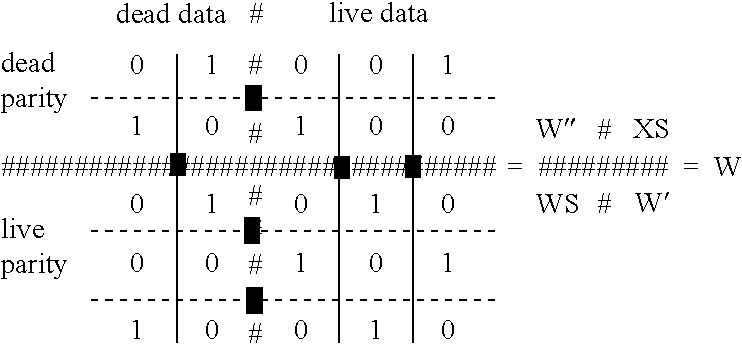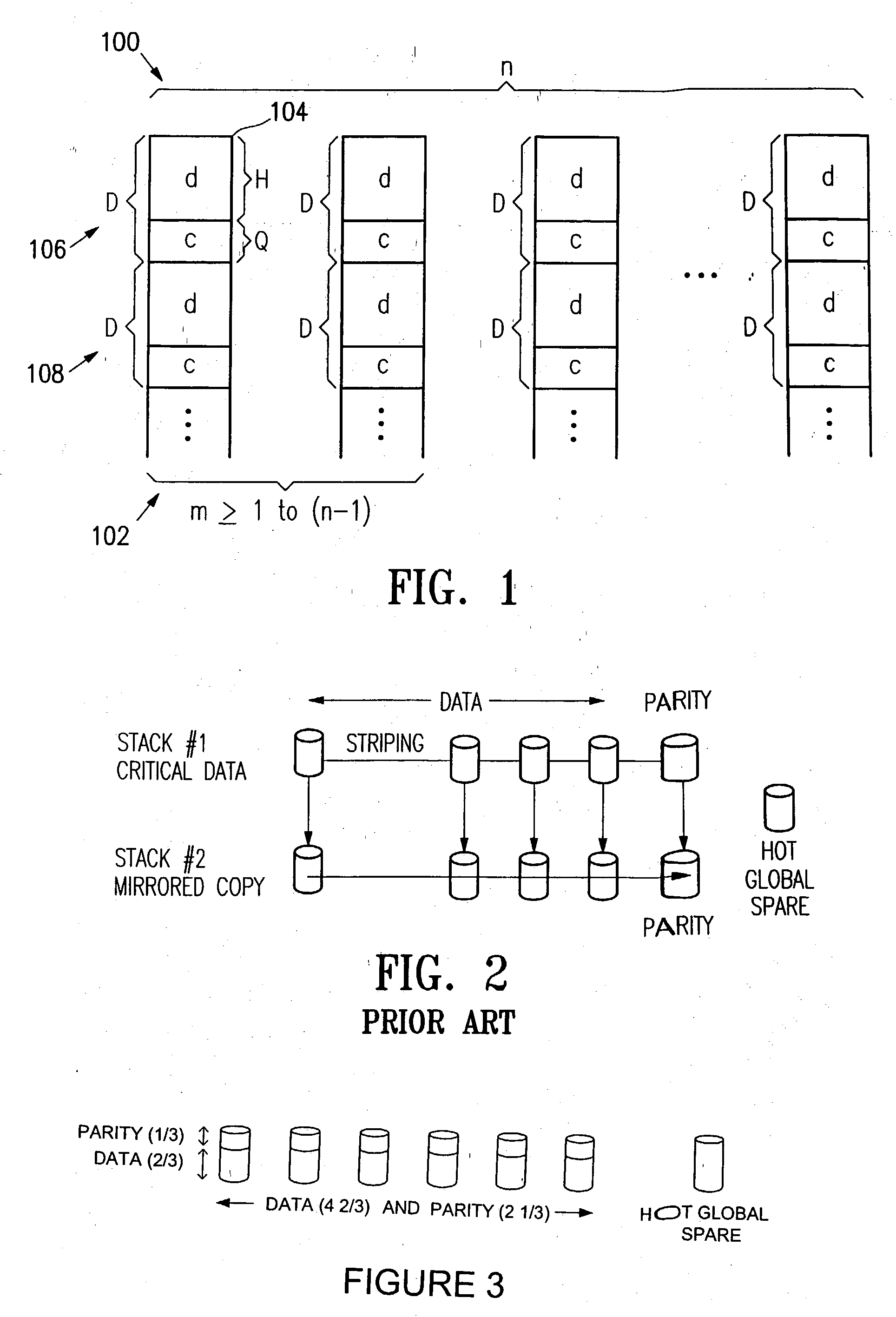Data redundancy methods and apparatus
a data redundancy and data technology, applied in the field of data redundancy methods and apparatuses, can solve the problems of inability to conduct essential business or critical operations, the importance of preserving data integrity and ensuring 24.times.7 continuous access to critical information cannot be overstated, and the downtime is extremely costly
- Summary
- Abstract
- Description
- Claims
- Application Information
AI Technical Summary
Problems solved by technology
Method used
Image
Examples
Embodiment Construction
[0175] Matrix multiplication modulo 2 is used. # is not a number, but a separator between dead and live territory. 11 W 01 #001 10 #100 # # # # # # 01 #010 00 #101 10 #010 D 1 0 # 1 1 1 = P 1 0 # 1 0 0= P ' ' # # # P3
[0176] D" and P" are lost. D' and P3=P' mare known, as is W. 12 W ' D ' P 1 010 1 1 101 1 = 0 010 1 1 P 1^P 3 P 2 1 1 0 0 0 = 0 1 0 1 W S J S 01 001 00 solution = 100 10 J S P 2 D ' ' 001 0 1 100 0 = 0 1
[0177] And thus, D" is recovered. P" can be recovered by encoding from D" and D'.
[0178] Detection of Burst Errors. The following discussion relates to a technique for error detection with use of a matrix parity coding technique. Coding matrices useful for error detection according to this technique include near-Wiencko matrices, Wiencko matrices as described in U.S. patent application Ser. No. 09 / 366,222 referenced above, and any other suitable coding matrices, which are generally referred to simply as "coding matrix" or "coding matrices" in the following description. Co...
PUM
| Property | Measurement | Unit |
|---|---|---|
| Mean Time Between Failure | aaaaa | aaaaa |
| frequency | aaaaa | aaaaa |
| time | aaaaa | aaaaa |
Abstract
Description
Claims
Application Information
 Login to View More
Login to View More - R&D
- Intellectual Property
- Life Sciences
- Materials
- Tech Scout
- Unparalleled Data Quality
- Higher Quality Content
- 60% Fewer Hallucinations
Browse by: Latest US Patents, China's latest patents, Technical Efficacy Thesaurus, Application Domain, Technology Topic, Popular Technical Reports.
© 2025 PatSnap. All rights reserved.Legal|Privacy policy|Modern Slavery Act Transparency Statement|Sitemap|About US| Contact US: help@patsnap.com



